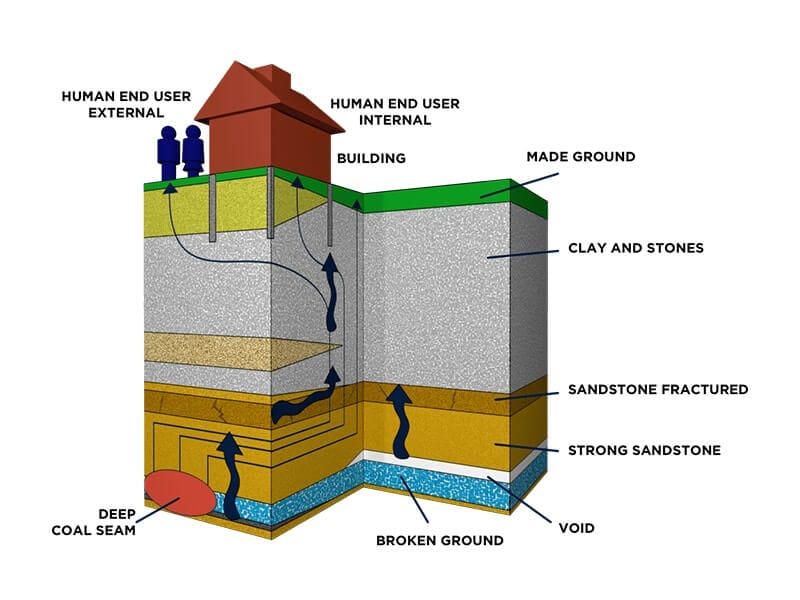
Migration pathways include pore spaces (e.g. in sands or gravels), fractures, joints, bedding planes and fault lines.
Anthropogenic influences can increase permeability, for example, by activities such as mine grouting, air blast rotary drilling, blasting and mining. All of these can have potentially catastrophic effects on pathways and ground gas movements. In addition, anthropogenic influences include sewers, granular backfill around services, cable ducts, pipes, service ducts, drains and voids such as inspection pits, underfloor spaces and basements, all of which may provide preferential ground gas migration pathways.
Hazards associated with methane and carbon dioxide gases
It is well known that the presence of methane gas can be highly hazardous to human health. However, the fact that methane is a colourless, odourless gas means that there is no simple indicator of its presence until such a time as explosive limits are reached and an incident occurs. For this reason, it is vital that sources of methane are identified prior to any work on a (construction) site commencing, and that measures are put in place to prevent a dangerous build-up of gas within buildings. In March 1986 a house at Loscoe in Derbyshire was completely destroyed by a methane gas explosion, badly injuring the three occupants. Eight months later at a Public Inquiry, the sequence of events leading up to the incident was established and evidence produced to ascertain the origin of the methane 1. During the proceedings, it became apparent that signs of ground heating had been detected approximately 100 m beyond the boundary of a near-by landfill some years before the explosion but that the phenomenon had been misinterpreted as a shallow burning coal seam. Had the geology been known to the investigators at that time, it is possible that the landfill would have been identified as the source of methane and the Loscoe area protected from the dangers of uncontrolled gas migration.
Carbon dioxide is also a colourless, odourless gas, which, although non-flammable, is both toxic and an asphyxiant because it displaces oxygen. As carbon dioxide is denser than air, it will collect in low points and depressions, which can be an extreme hazard during foundation construction and earth movements on development sites or in finished buildings and structures. One such case was reported by Inside Housing 2 following the development of 64 council houses in Gorebridge, West Lothian. Instead of being “a dream destination, they (the houses) exposed families to such serious health risks that the homes are now being demolished”.
Local health professionals first noted a cluster of health complaints which eventually lead to Midlothian Council calling in consulting and structural engineers (Fairhurst) to carry out an investigation, which resulted in a 195 page report 3.
Fairhurst demonstrated the migration of CO2 from former coal mine workings and as can be seen in the image below, the pathways are dependent upon the localised geology, in this case predominantly sandstone, clay and sand.










